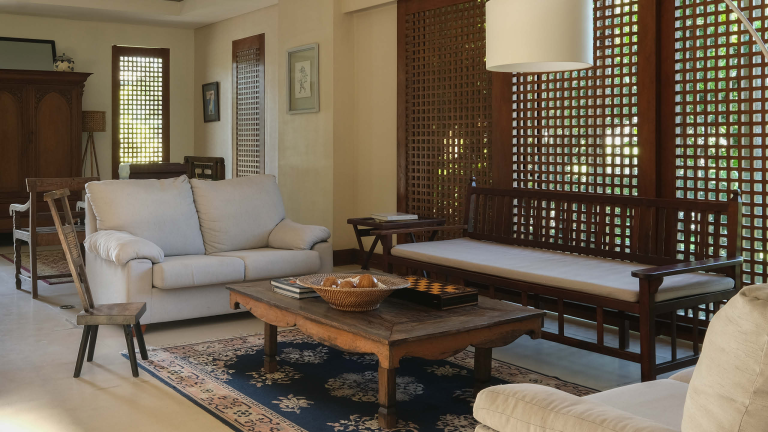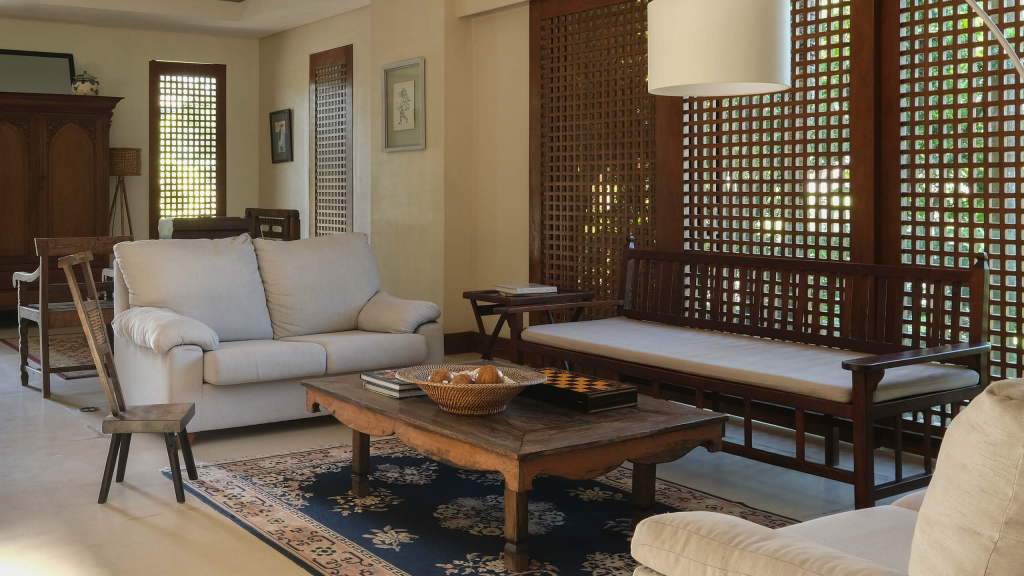
Creating Calm: Embrace Minimalist Interior Design
In today’s fast-paced world filled with constant notifications, visual stimulation, and the accumulation of possessions, our homes often reflect the chaos of our external environment rather than serving as sanctuaries from it. Minimalist interior design offers a compelling alternative—a thoughtful approach to creating living spaces that promote tranquility, functionality, and intentionality. By embracing the “less is more” philosophy, you can transform your home into a peaceful retreat that not only looks aesthetically pleasing but actively contributes to your mental wellbeing through simplified surroundings and purposeful design choices.
Understanding Minimalist Design Philosophy
At its core, minimalism isn’t simply about having fewer possessions—it represents a deliberate approach to living and design that prioritizes quality over quantity, function over excess, and intentionality over impulse.
The Essence of Minimalism
True minimalism encompasses several fundamental principles:
- Purposeful simplicity in both form and function
- Thoughtful curation rather than elimination for its own sake
- Quality materials that age beautifully and last longer
- Clean lines and uncluttered spaces that allow the eye to rest
- Careful attention to how objects and spaces serve daily life
This approach stands in contrast to the common misconception that minimalist spaces must be stark, cold, or devoid of personality. Instead, authentic minimalism creates room for what truly matters by removing what doesn’t.
Historical Context and Evolution
While minimalism has gained significant popularity in recent years, its principles have deep historical roots:
- Traditional Japanese design emphasizing simplicity and harmony with nature
- Mid-century modernist focus on form following function
- Scandinavian design balancing minimalism with warmth
- Contemporary interpretations incorporating sustainability and technology
Understanding these influences helps create minimalist spaces that feel timeless rather than trendy.
Core Elements of Minimalist Interior Design
Creating effective minimalist spaces involves attention to several key elements that work together harmoniously.
Thoughtful Space Planning
Minimalist interiors begin with intentional space allocation:
- Clear pathways promoting easy movement
- Furniture placement that creates breathing room
- Functional zones defined without physical barriers
- Negative space valued as much as filled space
- Scale and proportion carefully balanced
This thoughtful arrangement creates spaces that feel open and calming without seeming empty.
Color Philosophy in Minimalism
Color plays a crucial role in minimalist design:
- Limited palettes creating cohesion and tranquility
- Neutral bases allowing architectural elements to shine
- Thoughtful color accents providing focal points
- Tonal variations adding depth without complexity
- Natural material colors bringing warmth and connection
Contrary to popular belief, minimalist spaces needn’t be exclusively white—they simply require intentional color choices rather than random combinations.

Material Selection and Texture
Minimalist design relies heavily on material quality and tactile experience:
- Natural materials bringing warmth and connection to nature
- Contrasting textures creating interest without visual clutter
- Durable, quality surfaces that improve with age
- Material authenticity rather than imitations
- Tactile elements inviting touch and interaction
These material considerations prevent minimalist spaces from feeling clinical while maintaining visual simplicity.
Implementing Minimalism Throughout Your Home
Applying minimalist principles to different living areas requires understanding each space’s specific functions and needs.
Minimalist Living Areas
Create tranquil gathering spaces through:
- Furniture with clean lines serving clear purposes
- Strategic placement maximizing conversation and function
- Limited decorative objects with personal significance
- Media storage solutions minimizing visual technology presence
- Multifunctional pieces reducing total furniture requirements
These approaches create living areas that facilitate connection rather than distraction.
Serene Minimalist Bedrooms
Transform bedrooms into true retreats through:
- Bed and essential furniture positioned for flow and function
- Limited bedroom storage focusing on daily necessities
- Natural, breathable textiles in harmonious tones
- Absence of technology and work-related items
- Strategic lighting for different moods and activities
These elements create restorative spaces that promote quality rest and relaxation.
Functional Minimalist Kitchens
Apply minimalism to kitchens through:
- Clear countertops with only essential daily tools visible
- Strategic home organization systems keeping tools accessible but hidden
- Quality, multipurpose cooking tools replacing single-use gadgets
- Intentional food storage preventing waste and clutter
- Simplified cleaning routines made possible by reduced surfaces
These approaches transform kitchens from chaotic work zones into spaces that inspire culinary creativity.

The Benefits of Embracing Minimalist Design
Minimalist interiors offer benefits extending far beyond aesthetic appeal.
Mental and Emotional Wellbeing
Research increasingly supports minimalism’s psychological benefits:
- Reduced visual stimulation decreasing mental fatigue
- Lower maintenance requirements freeing time and mental energy
- Decreased decision fatigue through limited options
- Enhanced appreciation for what remains
- Greater mindfulness of consumption patterns
These benefits align minimalism with broader sustainable living principles that promote wellbeing alongside environmental consciousness.
Practical Advantages
Minimalist homes offer tangible practical benefits:
- Easier cleaning and maintenance routines
- Financial savings through quality-over-quantity purchasing
- Improved spatial efficiency, particularly in smaller homes
- Better air quality with reduced dust-collecting surfaces
- Enhanced flexibility for changing needs
These practical advantages make minimalism particularly valuable in urban Philippine settings where space often comes at a premium.
Transitioning to Minimalist Living
Moving toward minimalism represents a journey rather than an overnight transformation.
Beginning Your Minimalist Journey
Start with manageable steps:
- Addressing one space or category at a time
- Questioning each item’s purpose and value
- Creating simple systems for maintaining order
- Developing mindful consumption habits
- Focusing on progress rather than perfection
This gradual approach prevents the overwhelm that often accompanies lifestyle changes.
Overcoming Common Challenges
Address typical minimalist transition difficulties:
- Sentimental attachment to possessions
- Family members with different organizational preferences
- Cultural expectations around hospitality and abundance
- Guilt associated with discarding gifts or inheritances
- Finding the right balance for your unique needs
Recognizing these challenges as normal parts of the process helps maintain momentum during transitions.

Minimalism Adapted to Philippine Living
While minimalism’s principles remain consistent globally, thoughtful adaptation to local context enhances its relevance.
Cultural Considerations
Adapt minimalism to Philippine contexts through:
- Honoring family heritage through carefully selected meaningful items
- Creating space for extended family gatherings while maintaining simplicity
- Incorporating local craftsmanship emphasizing quality and tradition
- Addressing tropical climate considerations in material and design choices
- Balancing minimalist principles with Filipino hospitality traditions
These adaptations create culturally resonant spaces that still embrace minimalist benefits.
Climate-Responsive Minimalism
Adapt minimalist principles to tropical environments:
- Selecting humidity-resistant materials
- Creating airflow-optimized furniture arrangements
- Incorporating indoor-outdoor connections
- Choosing maintenance-friendly surfaces for high-humidity conditions
- Seasonal adaptation strategies for different weather patterns
These considerations ensure minimalist spaces remain practical in Philippine climate conditions.
Conclusion
Minimalist interior design offers far more than aesthetic appeal—it provides a framework for creating homes that support mental wellbeing, sustainability, and intentional living. By focusing on quality over quantity, function over excess, and meaning over accumulation, minimalist interiors create space for what truly matters while eliminating what doesn’t.
Whether you’re redesigning your entire home or simply seeking to create more peaceful surroundings, incorporating minimalist principles can transform your living environment into a sanctuary that supports your best life. Start with small steps, focus on the areas causing the most stress, and gradually build a home that feels both beautiful and functional—a place that truly restores you rather than depleting your energy.
